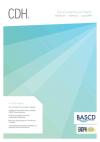Community Dental Health

- Cover Date:
- June 2019
- Print ISSN:
- 0265 539X
- Electronic ISSN:
- 2515-1746
- Vol:
- 36
- Issue:
- 2
The Effectiveness of Reform in the Dental Health Systems of Transitional Countries: The Case of Montenegro Health Reform (pilot study)
10.1922/CDH_4435Muric05
Objective: The main objective of this research is to evaluate the influence of reform in the dental health care system in Montenegro on the
oral hygiene awareness and health practices among children aged 11 to 14. Materials and Method: The research was performed among
public schoolchildren in Montenegro. Data was obtained by evaluating a structured questionnaire fulfilled by 300 children, aged between
11 and 14 years, at the beginning of reform in the dental health care system in 2009 (n = 150) and in 2018 (n = 150). Participants were
selected from three different geographical regions (North, Central and Southern). Result: Most participants reported brushing their teeth
twice daily (2009: 46% in Rozaje, 48% in Podgorica and 36% in Budva; 2018: 50% in Rozaje, 48% in Podgorica and 40% in Budva).
There was no difference by region in either 2009 or 2018 in the rate of self-reported gum bleeding when brushing teeth (p values 0.387 and
0.825, respectively). Most respondents went to the dentist only when they needed treatment. Conclusion: There is no significant change in
the awareness and practices of oral hygiene maintenance among children aged 11 to 14 years in Montenegro at the beginning of the reform
of dental health care compared to nine years later. It is necessary to introduce more continuous education programs to promote oral health.
Keywords: Montenegro, oral health, reform, heath system
- Article Price
- £15.00
- Institution Article Price
- £
- Page Start
- 126
- Page End
- 130
- Authors
- Almina Muric
Articles from this issue
- Title
- Pg. Start
- Pg. End
- Editorial - How soon is soon enough? The challenge of implementing behaviours conducive to good oral health in at-risk infants and toddlers
- 89
- 90
- What influences use of dental services by the Korean disabled people? The role of perceived barriers in dental care system
- 101
- 105
- In-school toothbrushing programs in Aboriginal communities in New South Wales, Australia: A thematic analysis of teachers’ perspectives
- 106
- 110
- Relationship between Caregivers’ Oral Health Literacy and their Child’s Caries Experience
- 111
- 117
- The Effectiveness of Reform in the Dental Health Systems of Transitional Countries: The Case of Montenegro Health Reform (pilot study)
- 126
- 130
- Costs of dental care and its financial impacts on patients in a population with low availability of services
- 131
- 136
- Comparison of two measures to determine the oral health-related quality of life in elders with periodontal disease
- 143
- 149
